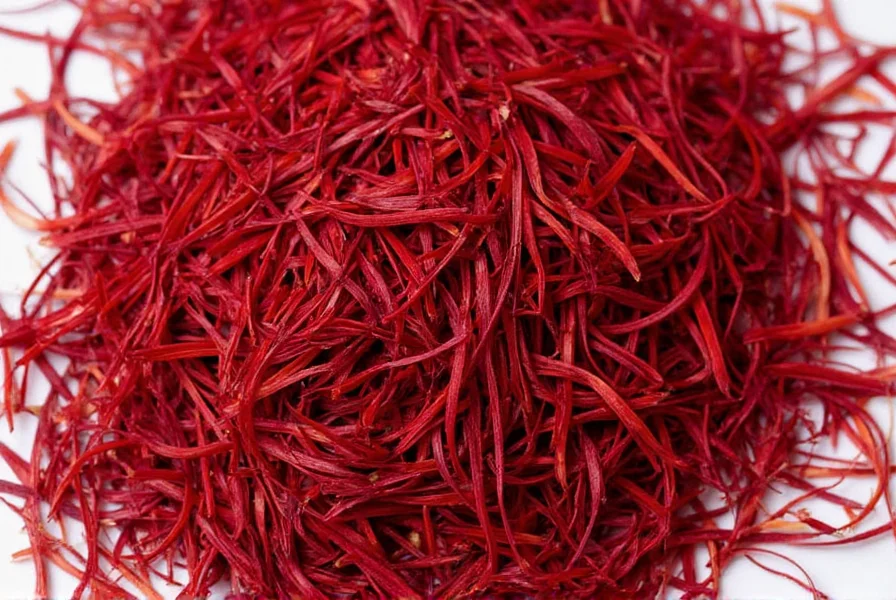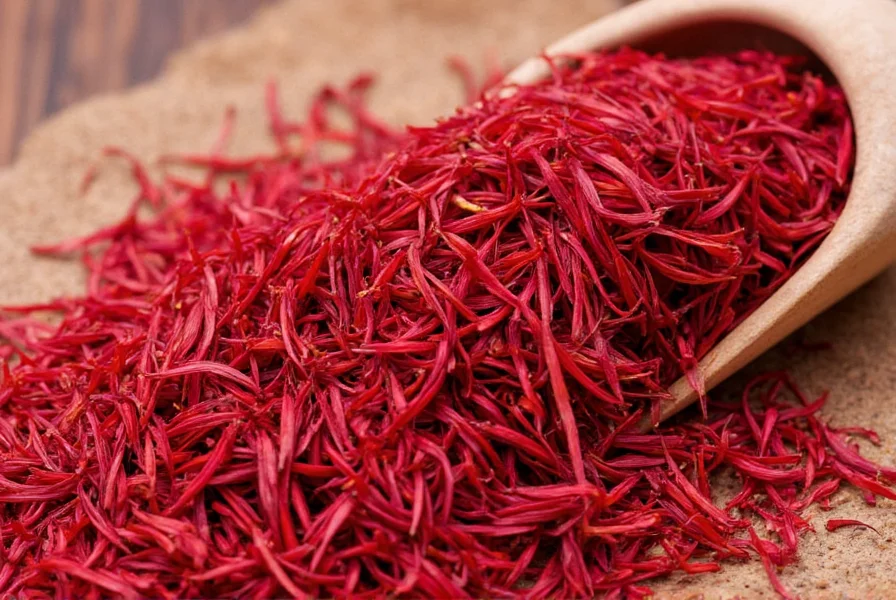Understanding how to buy quality saffron requires knowledge of grading standards, authentication methods, and trustworthy purchasing channels. This guide provides practical, evidence-based information to help you make informed decisions when purchasing this valuable spice.
Understanding Saffron Grading and Quality Standards
Saffron quality follows the ISO 3632 international standard, which measures color strength (crocin), flavor (picrocrocin), and aroma (safranal). Higher grades contain more of these compounds, delivering superior color, flavor, and aroma in your dishes.
| Grade | Crocin (Color) | Picrocrocin (Flavor) | Safranal (Aroma) | Price Range (per gram) |
|---|---|---|---|---|
| Coupé (I) | >190 | >80 | >20 | $15-$20 |
| Mancha (II) | 150-190 | 70-80 | 15-20 | $10-$15 |
| Mancha (III) | 110-150 | 50-70 | 10-15 | $5-$10 |
| Standard | <110 | <50 | <10 | $2-$5 |
The numbers represent absorbance values measured in laboratory conditions. Higher values indicate stronger color, flavor, and aroma. When you're looking to buy saffron online, reputable sellers should provide these ISO measurements for their product.
How to Identify Genuine Saffron
Counterfeit saffron remains widespread in global markets. Common adulterants include:
- Meadow saffron (toxic)
- Marigold petals (color only)
- Beetroot fibers (color only)
- Food coloring on corn silk
- Metallic salts to enhance weight
When you're trying to buy genuine saffron, perform these simple tests:
The Water Test
Place a few threads in warm water. Authentic saffron releases color gradually over 15-20 minutes, creating a rich golden-yellow hue. Fake saffron often bleeds color immediately or creates an unnaturally bright orange.
The Paper Test
Place threads on a paper towel and add a drop of water. Genuine saffron will create a gradual yellow ring spreading outward. Adulterated saffron often leaves concentrated spots of color.
The Smell and Taste Test
Quality saffron has a distinctive floral, honey-like aroma with earthy notes. When tasted (use caution with unknown sources), it should have a bitter flavor that transforms into a sweet, hay-like aftertaste. Metallic or chemical tastes indicate adulteration.

Where to Buy High Quality Saffron
Knowing where to buy saffron online requires careful consideration of seller credibility. Follow these guidelines when selecting a source:
Reputable Online Retailers
Look for sellers who:
- Provide ISO 3632 certification documentation
- Disclose country of origin (Iran produces 90% of world's saffron)
- Offer recent harvest dates (saffron degrades over time)
- Have transparent business information
- Maintain positive third-party reviews
Physical Stores
When purchasing from brick-and-mortar locations:
- Specialty spice shops typically offer better quality than supermarkets
- Ask to see the threads before purchase
- Check for proper storage (cool, dark, airtight containers)
- Avoid pre-ground saffron, which is almost always adulterated
Saffron Price Expectations
Understanding saffron price per gram helps identify potentially fraudulent products. Hand-harvested saffron requires approximately 150,000 flowers to produce one kilogram of dried stigma, making it the world's most expensive spice.
When you're trying to buy the best saffron, remember these price guidelines:
- Less than $2 per gram: Almost certainly adulterated
- $2-$5 per gram: Standard grade, possibly mixed with lower-quality saffron
- $5-$10 per gram: Good quality, suitable for regular cooking
- $10-$20 per gram: Premium grade for special occasions
Be wary of "deals" that seem too good to be true. If you're looking for where to buy high quality saffron, expect to pay appropriately for genuine product.
Proper Storage and Usage Tips
After you've successfully bought saffron, proper storage maintains its quality:
- Store in an airtight container away from light and moisture
- Keep in a cool, dark place (refrigeration extends shelf life)
- Whole threads retain quality for 2-3 years; ground saffron loses potency within months
- To maximize flavor, crush threads with a mortar and pestle before use
- For best results, steep threads in warm liquid for 15-20 minutes before adding to recipes

Common Questions About Buying Saffron
How can I verify if saffron is authentic before purchasing?
Request ISO 3632 certification from the seller and examine the threads. Authentic saffron has deep red threads with minimal yellow styles (less than 10% by weight). The threads should feel brittle, not moist, and release color gradually in warm water over 15-20 minutes. Avoid products with uniform coloring throughout the thread, as genuine saffron shows color gradient from red to yellow.
What's the difference between Spanish, Iranian, and Kashmiri saffron?
Iran produces approximately 90% of the world's saffron, with Spanish saffron typically being Iranian saffron that's been processed and packaged in Spain. Kashmiri saffron has a distinctive deep red color and stronger aroma but is extremely rare and expensive. Iranian saffron generally offers the best balance of quality and value. When you're looking to buy saffron online, focus on ISO grading rather than country of origin, as quality varies more by grade than by region.
How much saffron should I use in recipes?
A pinch (about 20 threads or 0.1 grams) typically flavors 4-6 servings. Start with small amounts as too much creates bitterness. For best results, crush threads and steep in warm liquid for 15-20 minutes before adding to your dish. When buying saffron, remember that a single gram can flavor approximately 50 servings, making high-quality saffron more economical than you might expect.
Can I trust saffron sold in supermarkets?
Supermarket saffron varies widely in quality. Pre-ground saffron is almost always adulterated. Whole thread saffron in supermarkets may be authentic but often represents lower grades. Check for ISO certification and harvest dates. For where to buy high quality saffron, specialty spice retailers typically offer better quality control and fresher product than general grocery stores.
How long does saffron stay fresh after purchase?
Properly stored saffron threads maintain peak quality for 2-3 years. Store in an airtight container away from light, heat, and moisture. Ground saffron loses potency within 6 months. To test freshness, rub a thread between your fingers - fresh saffron should leave a strong yellow stain and emit a distinctive floral aroma. When you've bought saffron, mark the purchase date on the container to track freshness.











 浙公网安备
33010002000092号
浙公网安备
33010002000092号 浙B2-20120091-4
浙B2-20120091-4